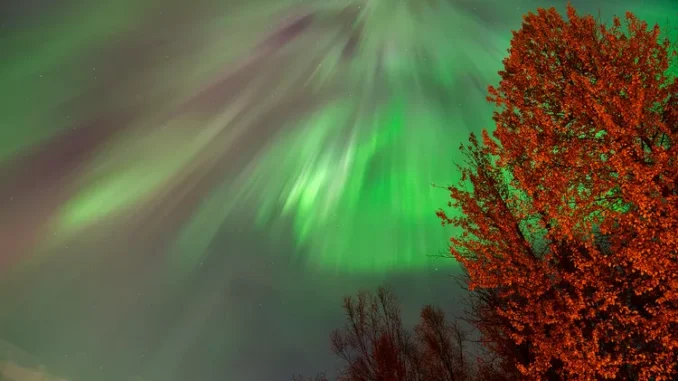
A second round of November auroras are predicted in NOAA’s latest three-day forecast, producing the chance for a colorful night sky in select parts of the U.S.
Another round of northern lights are expected to take place this November, dazzling the night sky just weeks after the National Oceanic and Atmospheric Administration (NOAA) forecasted a minor geomagnetic storm watch (G1) earlier in the month.
On Nov. 18, NOAA published a forecast that predicted potential aurora sightings over the course of three days. However, day one was reported to have the strongest chance of viewing compared to the following nights.
Unlike the northern lights forecast for the beginning of November, this round of auroras is not a result of a geomagnetic storm. Furthermore, no geomagnetic storms are expected to take place in the next three days either.
Northern lights are famously known for their spectacular display of radiant colors — blues, greens and pinks — in contrast to the dark, night sky. The vibrancy of the hues, however, is dependent upon the level of geomagnetic activity.
This is measured using a Kp index on the NOAA scale, which calculates the magnitude for geomagnetic storms ranging from zero to nine. The agency’s latest forecast predicts a Kp index of three, indicating viewers will likely have a display of auroras that is “quite pleasing to look at.”
The best part about the northern lights dazzling the night sky in the technologically advanced world that we live in today? Smartphones have a “Night Mode” feature that allows sky gazers to capture the beautiful display on camera with a single tap of a button.
Read on for everything to know about the second round of November northern lights, including when and how to watch them.
NOAA published a three-day forecast that predicted northern light visibility between Monday, Nov. 18 and Wednesday, Nov. 20. At the time, day one was expected to be the best chance for viewing the auroras in comparison to the days that followed.
The agency published a follow-up report on Tuesday, Nov. 19 with a second three-day forecast that stretched through Thursday, Nov. 21. Again, the first night is predicted to be the strongest of the three overall.
On a Kp scale of zero to nine (with nine being the strongest), the Nov. 19 forecast measured a Kp index of three. The days that followed all have a forecast of one, with NOAA writing, “No G1 (Minor) or greater geomagnetic storms are expected.”
Where will the northern lights be visible?
The Nov. 19-21 stretch of northern lights are predicted to be visible in select parts of the United States. According to the NOAA, the best areas for viewing include the following: Alaska, northern portions of Montana, North Dakota and Minnesota.
Viewers in parts of Washington, Idaho, Wisconsin and Michigan may also have a chance at catching the auroras. Be sure to check NOAA’s aurora viewline for accurate updates over the course of three days.
The best part about watching the northern lights is its ability to be spotted with the naked eye! That means you don’t have to purchase expensive technology to catch a glimpse.
Be the first to comment